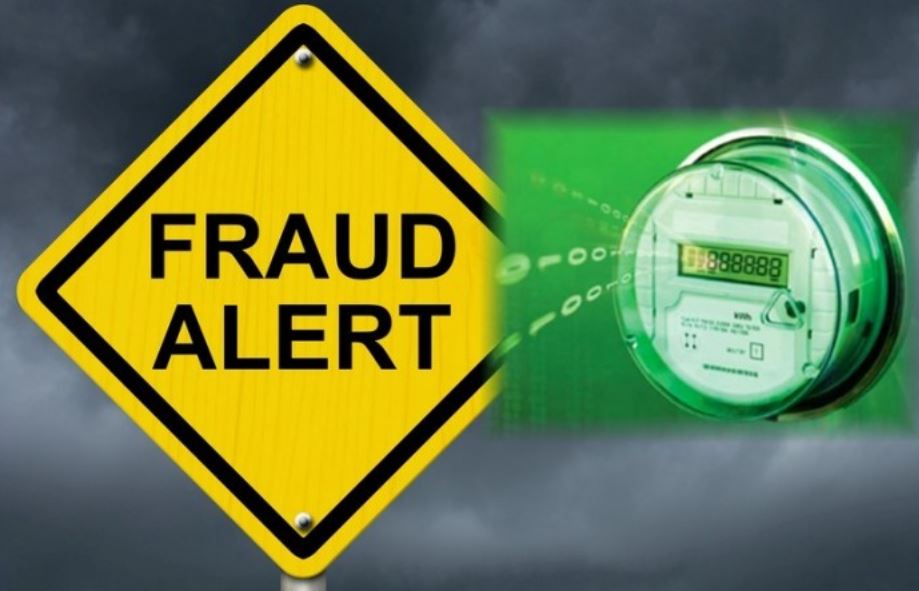There is information about AMI Smart Meters probably very few people know anything about, but will affect them enormously, especially when consumers don’t know to expect what’s happening.
It’s demand-side management (DSM), which allows electric utilities to turn off various appliances in order to conserve energy—one of the main, if not the key reason—for AMI Smart Meters, in my opinion, in addition to surveillance.
Instead of improving electric utilities infrastructure; building new energy production facilities; or providing renewal energy sources, I offer, utilities can cut, reduce electric service, or provide “brown outs” to 25 percent—maybe more—customers on a rotating basis so only 75 percent of customers will be using peak energy levels at any given time during peak load demands. Electric utility customers should think consecutive “rolling brown outs.” One specific creature-comfort impacted is air conditioning during hot, humid summer weather.
DSM has been around since the 1980s, maybe even earlier in the 1970s. At one time customers could “buy into DSM” in order to save on energy costs, but from what I gather, current AMI SMs will make DSM an automatic “built-in” feature customers will have no say about how it’s implemented by the utility. It’s there to be used at the sole discretion and control of the utility. So, don’t be surprised if your air conditioner goes quiet for 15 minutes, or longer, during peak demand periods. Nothing may be wrong with your air conditioning unit; it may be your electric company sending a microwave signal to your AMI Smart Meter to shut off the air conditioner, specifically newer models or a “smart, energy-saver” air conditioner with a built-in ZigBee transmitter, which operates on microwaves in the gigahertz range.
The same DSM principle for “brown outs” can be applied to other appliances: refrigerators, washers, dryers, water heaters, or other “high demand” appliances in your home. That’s what utilities’ algorithms are all about: monitoring your electric consumption by recording and tracking each appliance’s electrical ‘signature’. Onzo explains how that’s done and what utilities do with it.
Demand-side management apparently is a well-recognized scheme for reducing required infrastructure capacity. However, the AMI Smart Meter probably is the most unreliable—and most vulnerable—link in The Grid system in the USA, since its network is extremely porous and can be hacked into by any two-bit hacker with some degree of hacking sophistication.
How about a hacker changing your meter’s network settings?
 That’s something to consider, I think, if your bills seem consecutively out of normal. I’d go so far as to suggest that to the utility company, since utilities know how porous their AMI SM systems are.
That’s something to consider, I think, if your bills seem consecutively out of normal. I’d go so far as to suggest that to the utility company, since utilities know how porous their AMI SM systems are.
That being said, individual consumers can become “sitting ducks” vulnerable to all sorts of hack attacks: identity theft, burglary surveillance, occupancy time and use tracking, and ‘stalking’ a home in order to commit nefarious criminal activity. Have you ever thought about that? Your smart meter data are transmitted via microwave technology. However, it could be made much safer by utilities using wired connections, not cell towers which will tie into the Internet of Things (IoT) global network.
Privacy in your home has been compromised, even eliminated, by AMI Smart Meters!
Is that the price we pay for buying into all those dumb ‘smart’ gadgets we’ve become addicted to? I offer. The lid on Pandora’s Box has been ripped open, probably never to be closed again to keep personal privacy issues private in the USA. What a tragedy for a country now run as a Corporatocracy!
Resource:
Using Smart Meters as a Digital Attack Vector
https://www.tripwire.com/state-of-security/security-data-protection/security-controls/using-smart-meters-digital-attack-vector/
Catherine J Frompovich (website) is a retired natural nutritionist who earned advanced degrees in Nutrition and Holistic Health Sciences, Certification in Orthomolecular Theory and Practice plus Paralegal Studies. Her work has been published in national and airline magazines since the early 1980s. Catherine authored numerous books on health issues along with co-authoring papers and monographs with physicians, nurses, and holistic healthcare professionals. She has been a consumer healthcare researcher 35 years and counting.
Catherine’s latest book, published October 4, 2013, is Vaccination Voodoo, What YOU Don’t Know About Vaccines, available on Amazon.com.
Her 2012 book A Cancer Answer, Holistic BREAST Cancer Management, A Guide to Effective & Non-Toxic Treatments, is available on Amazon.com and as a Kindle eBook.
Two of Catherine’s more recent books on Amazon.com are Our Chemical Lives And The Hijacking Of Our DNA, A Probe Into What’s Probably Making Us Sick (2009) and Lord, How Can I Make It Through Grieving My Loss, An Inspirational Guide Through the Grieving Process (2008)
Catherine’s NEW book: Eat To Beat Disease, Foods Medicinal Qualities ©2016 Catherine J Frompovich is now available.


One point I have failed to see mentioned in Smart Meter discussions is the electrical power factor. Not surprising, since newly-minted electricians have never heard if it.
The average hone usually had power delivered at a PF ratio of about 0.7 (that is, the current was out of phase with the voltage) caused by an increased number of electric motors being used (air conditioners, refrigerators, washing machines, kitchen appliances) and induction devices (like transformers). This was not a problem for consumers (except the higher current need would blow out fuses or open circuit breakers) because the continuous wattmeter that measured power use only charge for the actual wattage used. But at a PF of 07, the utility companies would have to provide about 150% of the current needed, and they adjusted their wattage charges to consumers.
The PF can be easily corrected by installing a capacitor in each device during manufacture. For example, my airconditioner has such installed, and has a power factor close to unity (meaning it produces the power output at about 2/3rds the current a non-PF-corrected unit would.
But for some reason, utility companies dislike PF correction being installed in devices, or in the supply circuits. Can they be wanting to pay for the extra current, or is there another idea?
A Smart Meter can have the way wattage is calculated changed to a method that actually charges for the current supplied instead of the actual wattage used. So the consumer seems to see the wattage used rising in spite of using less power, so the utility company still makes at least the same money without facing a backlash because it raised prices.